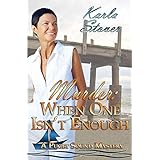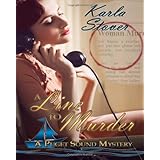 |
For more information about BWL books by J.Q. Rose ,
and to purchase, please visit J.Q.'s
|
❤❤❤❤❤
The month of February is known for cupids, hearts, romance and love. It’s the perfect time of year to remember Shakespeare’s famous love story, Romeo and Juliet. This is my favorite passage from the play.
Juliet:
"What's in a name? That which we call a rose
"What's in a name? That which we call a rose
In this famous scene Juliet asks what’s in a name. She answers by telling Romeo Montague that a name is meaningless. She loves the person who is called "Montague," not the Montague name and not the Montague family.
Alas, Juliet is wrong about a name being meaningless as far as writers and readers are concerned.
As a writer, I've discovered a name helps to convey to the reader a character's personality. If writing a story set in Victorian times, an author would not choose Jayden or Madison, the popular names in 2010. Names also help to establish the setting of the novel. Arapaho Valley conjures up a setting in the West, not in an Eastern city. Do you agree?
A strong, powerfully built hero would probably not be named Herbert. How about that gorgeous sexy blonde character at the bar? A name like Edith just does not evoke the matching image in the reader’s mind. (But it would be a fun twist to name her Edith anyway.)
When penning my romantic suspense novel, Dangerous Sanctuary,I tried several contemporary names for my main character who is a female minister. In a moment of creative energy, the name Christine swirled through my brain. I knew that was exactly the name I had been searching for. Later I discovered the meaning of the name is "follower of Christ."
Think about the name of your favorite character in a book you've read. I love Mark Twain’s Huck Finn. There just is no other name that would fit that adventurous kid. In Janet Evanovich’s Stephanie Plum series, what better name than Lula for that wild and crazy lady of the night and Morelli for the sexy rogue policeman?
When it comes to naming characters, what’s in a name? Everything!
❤❤❤❤❤
Books We Love and author J.Q. Rose are celebrating this month of love by offering the romantic suspense, Dangerous Sanctuary FREE today, February 20.
❤❤❤❤❤
About J.Q.
After writing feature articles in magazines, newspapers, and online magazines for over fifteen years, J.Q. Rose entered the world of fiction. Her published mysteries are Deadly Undertaking and Dangerous Sanctuary released by
Books We Love Publishing. Blogging, photography, Pegs and Jokers board games, and travel are the things that keep her out of trouble. She spends winters in Florida and summers up north camping and hunting toads, frogs, and salamanders with her four grandsons and granddaughter.
 |
| Author J.Q. Rose |
Connect with J.Q. Rose online at




















































.jpg)

